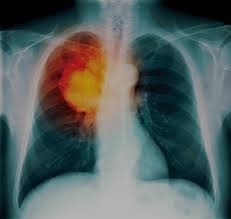Best Lung Cancer Treatment in Delhi | Lung Cancer Treatment Cost
Lung cancer is highly treatable and often curable, even when a patient has severely damaged lungs and advanced disease. Our Center’s goal is to provide treatment that is effective and innovative in curing and controlling cancer. The Center’s doctors are pioneering advances in ineffective, minimally invasive techniques that lower patients’ risk, pain, and recovery time and enable even very ill patients to improve their quality of life. We provide Best Lung Cancer Treatment in Delhi.

The care of patients with lung cancer is a collaborative, multidisciplinary process. In a highly supportive and patient-focused environment, the Center for Thoracic Oncology at Fortis organizes services around each patient, bringing together diverse physician specialists’ expertise to manage care from the first consultation through treatment and follow-up visits. The FORTIS team combines state-of-the-art expertise with the technological advances of a major teaching hospital at the forefront of clinical practice, surgical expertise, and research in oncology.
A multidisciplinary medical team will work with the patient and their primary care physician to diagnose lung cancer and determine its severity.
In collaboration with other specialists, the physician will likely order several diagnostic tests and review the weekly Multidisciplinary Thoracic Tumor Board meeting results. This interdepartmental review process guides the treatment recommendations. In consultation with the patient and primary care physician, the team will plan the best course of treatment for the patient based on the type and extent of cancer and overall health. For suspected or confirmed diagnoses of lung cancer, physicians will use various diagnostic procedures to stage the disease and determine its severity and spread. Several tests and diagnostic procedures may be needed before treatment begins.
Treatment: Specialists from thoracic surgery, medical oncology, radiation oncology, radiology, and other medical disciplines combine their expertise to provide each patient with an integrated, individualized treatment plan. The plan may include surgery, radiation, chemotherapy, or a combination of these treatments. Maybe a patient gets offered the opportunity to participate in clinical trials if an investigational lung cancer therapy is appropriate.
With their depth and range of expertise, Fortis specialists apply a wide array of state-of-the-art techniques, including VATS and Robotic Surgery to cure patients by removing and killing cancerous tissue. The surgeons also use the most advanced techniques to relieve the symptoms of patients with advanced disease to improve their quality of life.
Surgery and Minimally Invasive Surgical Procedures for Lung Cancer
Lung Resection: Lung resection is the surgical removal of all or part of the lung. The lung has three parts (called lobes) on the right side and two on the left. Often, an operation for lung cancer involves removing part or all of a lobe. Thoracic surgeons at FORTIS offer patients a variety of minimally invasive and robotic surgical procedures to treat lung cancer. The use of these state-of-the-art surgical techniques results in fewer side effects than traditional methods.
Video-Assisted Thoracoscopic Surgery (VATS) or Robotic Lobectomy: It may be possible to use this minimally invasive approach to perform a resection depending on cancer’s size and location. With VATS, several tiny incisions insert in the chest through which the surgeon inserts instruments and a small video camera that projects images onto a computer monitor. The surgeon uses the images from the computer monitor as a guide during surgery.
Other Treatments: In addition to procedures that treat cancer directly, FORTIS’s thoracic surgeons perform procedures that can alleviate conditions or symptoms that arise in connection with lung cancer.
These treatments include:
Pleurodesis: Doctors use pleurodesis to alleviate the effects of pleural effusion. Pleural effusion is the abnormal accumulation of fluid in the pleural space, which is the area between the two layers of tissue covering the lungs. The build-up of this fluid can constrict the lungs, limiting the amount of air that they take in. The process can lead to shortness of breath, a fast heart rate (tachycardia), and difficulty breathing, especially when you are lying flat. The treatment options include chemical pleurodesis, in which the surgeon injects a chemical agent into the pleural space. The chemical irritates the two layers, which eliminates the space.
PleurX Catheter: It is a thin, flexible tube that the surgeon will place in the pleural space to drain the fluid accumulation associated with pleural effusion. For this minimally invasive procedure, the surgeon will apply a local anesthetic to the chest area in which there is a catheter. The surgeon will make a small incision in the chest and place the catheter. Then connect the catheter to a small bottle that uses gentle suction to drain the fluid.
